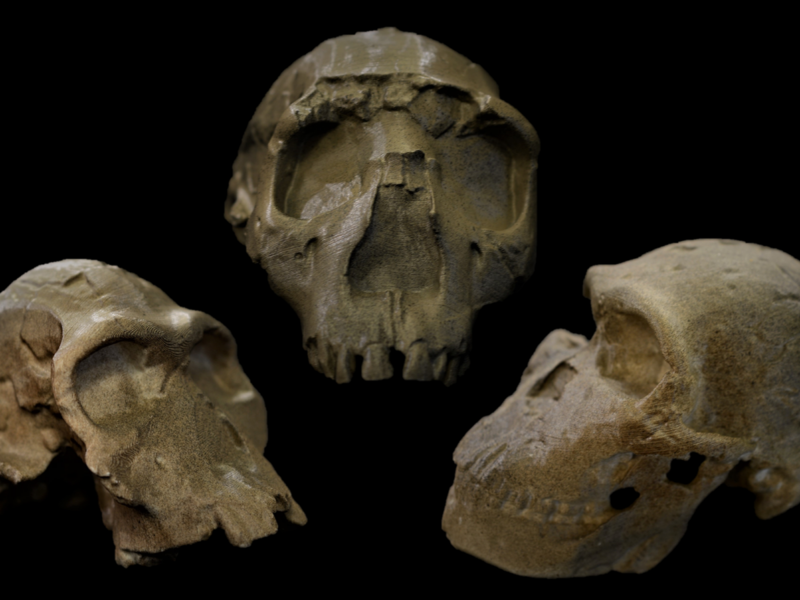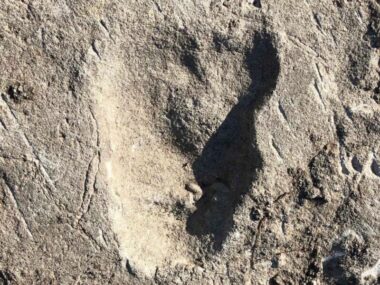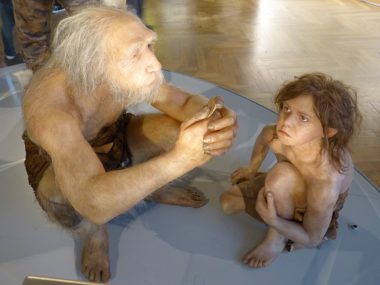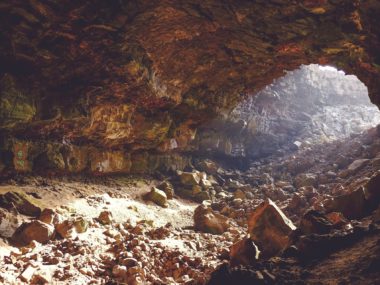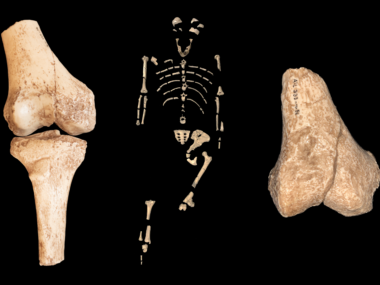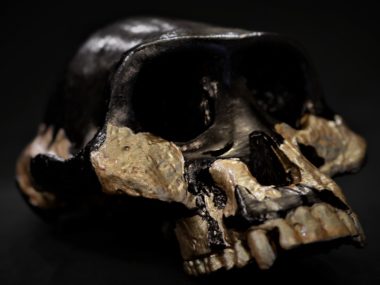Humans have settled the globe, inhabiting freezing tundras and scorching deserts. These varying environments influenced our ancestors, leading them to diversify into distinctive people groups. Ancient humans were unique in their appearance, having distinctive skulls and body proportions. Only a remnant of this past diversity remains in modern populations. How does this data fit within the biblical account? The Bible doesn’t tell us much about the physical appearance of our ancestors, but its explanation of how humans migrated and inhabited the earth may give us some clues.
The views expressed in this article reflect those of the author mentioned, and not necessarily those of New Creation.
The Biblical Story
The Floodwaters Recede
As the waters of the Flood subsided, the Ark ran aground on the mountains of Ararat. Imagine the relief Noah and his family must have felt after months of constant rocking and rolling! The ark rested there for a couple months, a singular feature in an endless ocean. Then, on the first day of the tenth month, Noah saw the mountain peaks rising out of the waves. The desolate world was slowly revealed as the water drained off the continents. God called Noah to leave the Ark in the second month: “So Noah came out, together with his sons and his wife and his sons’ wives.” (Genesis 8:18). As they disembarked they left behind footsteps in the mud of a new world, washed from the depravity of man. God spoke words of blessing over Noah’s family, telling them to “Be fruitful and increase in number and fill the earth.” (Genesis 9:1).
Leaving the Ark Behind
Noah and his family probably lived near the mountains of Ararat for some time following the Flood. The scriptures tell us that, “Noah, a man of the soil, proceeded to plant a vineyard.” (Genesis 9:20) Shem fathered a son, Arphaxad, two years after the flood. Once the population had grown, people began to migrate from the east.
They settled together in the land of Shinar, a lush region in between the Tigris and Euphrates Rivers. But man, in defiance of God’s command to fill the earth, said, “let us build for ourselves a city with a tower that reaches to the heavens, that we may… not be scattered over the face of all the earth.” (Genesis 11:4) They began construction on a city and the infamous Tower of Babel. God confused their languages, hindering their collaboration. As a result, people spread out from Babel, probably in small family groups.
There is some debate among scholars as to the extent of the dispersion from Babel. Some believe that the dispersion from Babel was a localized event, not including most of the people alive at the time. Others would argue that this event was more expansive, driving the migration of nearly all people groups. The biblical text refers to the people who migrated from the east as “the whole world“, which would seem to favor a broader interpretation of this passage.
The Order of The Human Fossil Record
The Mountains of Ararat where the Ark landed are probably not entirely continuous with the modern mountain which shares their name. What does seem clear from Scripture, however, is that the Ark landed somewhere in the vicinity of the Middle East. This raises the question: should a biblical model predict that the earliest human fossils will be found in the Middle East? We do know that the patriarchs were living for hundreds of years at this time, giving them quite a while to migrate away from Babel before dying. However, we should still expect factors like infant mortality, predation, disease, and drowning to leave a fossil record. A site called Dmanisi, in the republic of Georgia, shows that very early humans did inhabit the region. However, these fossils are not quite as old as the oldest in southern Africa.
Genesis 11 describes the locations in which Noah’s descendants settled and seems to indicate that by the third generation after the Flood, people had inhabited the three old-world continents. As a result, I expect that human fossils would appear across the old-world within a fairly short time of one another. Radiometric dating, which I believe to be useful for relative comparisons, has shown stone tools in Shangchen, China to be fairly close in age to the earliest African fossils.
An important part of understanding how humans diversified following the Flood is knowing what sorts of physical features Noah and his family would have had. We might find the answer to this question by observing the earliest post-Flood human fossils. Since the people to whom those bones belonged were very close in time to Noah’s family, it is possible that they would physically resemble them. It seems probable that Noah may have looked like the human form we call Homo erectus. Homo erectus is the most widespread of the early humans; we have fossils of this type from all of the old-world continents. This raises the possibility that the original expansion following the Flood consisted of Homo erectus-like people.
Unique Adaptations
As people inhabited the earth, the environments they encountered shaped the way they looked and acted. The limb proportions of Neanderthals may be an example of this. Many warm-blooded creatures including humans follow “rules” that relate body size to temperature. These rules were developed by two 19th century scientists, Joel Allen and Carl Bergmann. Allen’s Rule states that creatures adapted to warm climates usually have thinner limbs than corresponding creatures in cold climates. Bergmann’s Rule says that creatures tend to be larger in cold environments and smaller in warm ones. Neanderthals follow these trends by being consistently short and stocky when compared to modern humans.
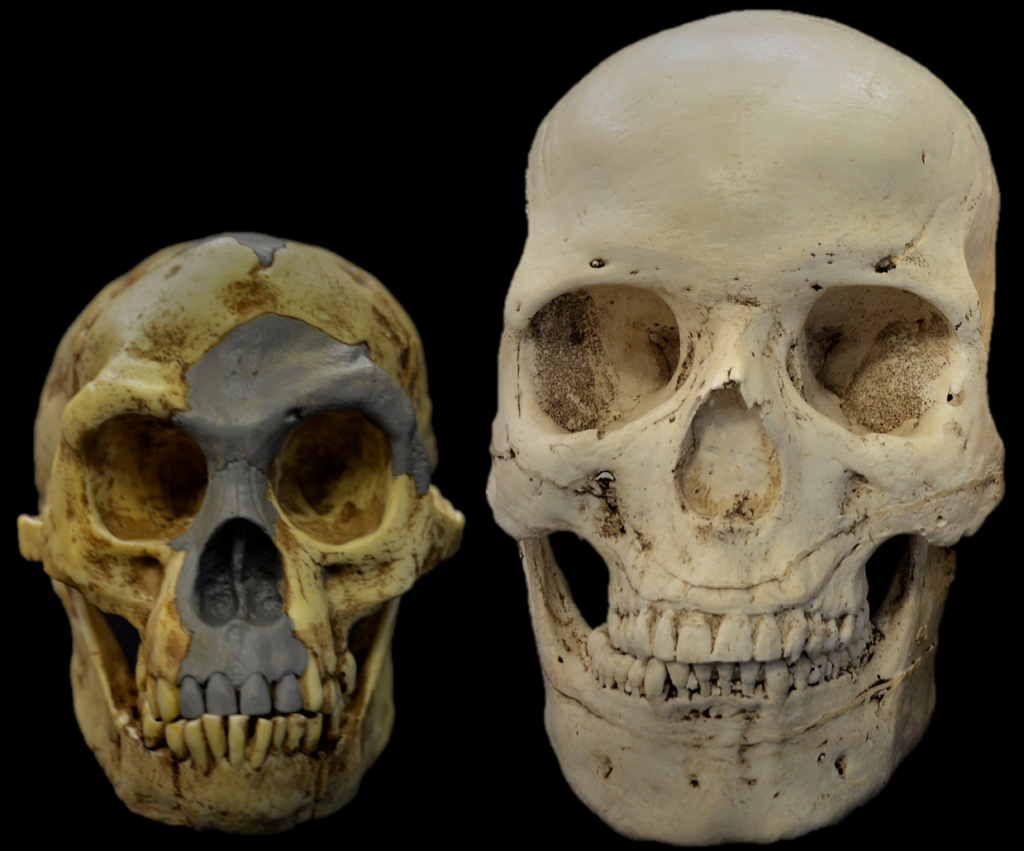
Some humans appear to have adapted to life on islands by becoming smaller. We call this phenomenon island dwarfism. Islands typically have less food available than the mainland, making it advantageous for creatures to become smaller and eat less. One example of this is Homo floresiensis, whose fossils come from the Indonesian island of Flores. The adult female skeleton, nicknamed “Flo” was only three and a half feet tall!
Other humans may have become suited to living at high altitudes. Denisovans are a poorly known group of people who lived in eastern Asia. Very little fossil material of Denisovans has been discovered. However, scientists have been able to sequence DNA from the small scraps of bones attributed to this group. Denisovans had a gene called EPAS1 which allowed them to breathe better at high altitudes.
The species to which we belong, Homo sapiens, appears rather late in the fossil record. Although this was only one of many human forms alive at the time, it eventually became the most widespread. The reason why these other descendants of Noah disappeared cannot be fully answered at this time. Possibly these people suffered extinction because of small population size. Or, perhaps, they assimilated into populations of anatomically modern people. Genetic evidence shows that our Homo sapiens ancestors interbred with both Neanderthals and Denisovans. Somehow, all other human forms went extinct, leaving only Homo sapiens alive today.
Conclusion
The physical differences which once existed within the human family remind us we should celebrate such diversity, even to the limited extent it exists in the present. Humans are amazing creatures of God, which have adapted to their environment in fascinating ways. God recognizes our uniqueness, and his plan is that people “of all nations, tribes, peoples, and tongues” will give Him praise.

